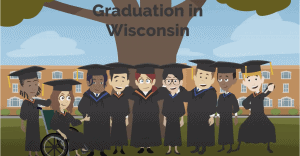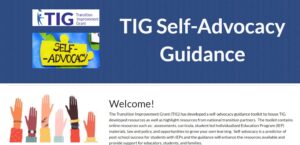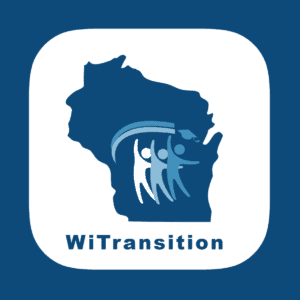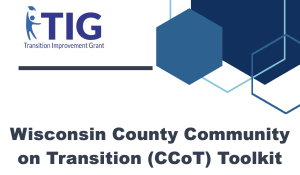Please note TIG will be updating the Self-Advocacy Suite.
Sugar Creek Elementary School
A principal’s perspective
One of the foundations for building an equitable, multi-level system of supports is strong, shared leadership. This story shows how their commitment to behavior (Positive Behavioral Interventions and Supports-PBIS) – and the drive of their principal – helped Sugar Creek Elementary transform into a proactive, safe, friendly environment. The school’s principal outlines how expectations are established, made clear, taught, retaught, and met. He also shares practices and techniques that have decreased the time he and others spend on behavioral issues. This not only makes his job easier, but it also gives staff more classroom time with students so they can learn and be successful.
Having been a principal during all phases of implementing PBIS, I gladly share how this system has revolutionized my career. Before PBIS, I was chief disciplinarian. With PBIS now in place, I am instead able to lead staff and students, focus on improving teaching and learning, and have time for other efforts. In order to keep our systems aligned, I dedicate significant time and energy – often daily – to PBIS.
Meetings
Setting the Tone for the Year: Our school year begins with a paid PBIS Kickoff in August, to celebrate the previous year’s successes and set a month-by-month calendar of plans and goals for the upcoming year. Later, at our Welcome Back session for all staff, every employee is informed about our universal behavioral plans.
Teaching the Students Expectations: For a two-week period in September, all teachers and staff spend 30 minutes a day reinforcing our four expectations (Be Kind, Be Safe, Be Responsible, and Be a Problem-Solver) for the bus, class, recess, lunchroom, halls, and bathrooms. Instruction is reinforced with posted behavioral expectation matrices, a buddy classroom system for time-outs, and a t-chart for both major and minor behavioral offenses. That way, all staff know exactly who handles what situations and how they will be resolved.
Face-to-Face Time: PBIS is a standing topic at each month’s staff meeting, recess supervisor meeting, site council, and school-wide community gathering. At our weekly leadership team meeting, we discuss student concerns and successes, incoming data, and how we can help each other with our PBIS roles.
Shared Leadership: Our PBIS coordinator oversees monthly PBIS team meetings and is compensated with an extra-curricular contract. The PBIS Team is open to all staff. By attending, they know they are agreeing to lead our school’s work with PBIS.
Teachers
New Hires: Every position announcement states that we are seeking candidates with knowledge of PBIS. In our district, our school has the highest rate of students who qualify for free or reduced lunch, as well as the most minority students, ESL students, and homeless elementary-age children. Our students need teachers who will not give up on them.
New staff receive in-depth training in behavioral management, the use of the Responsive Classroom, morning meetings expectations, acknowledgements, and our bi-monthly Cool Tool lessons. They also receive ongoing support from colleagues and our PBIS team.
Professional Development: Trainings and professional development are essential – and work especially well in teams. Each year, staff receive PBIS-related trainings including: networking sessions, Non-Violent Crisis Intervention trainings, Nurtured Heart trainings, and Responsive Classroom sessions. We also prioritize learning about equity in education.
Evaluations: Everyone has a role in the success, or failure, of what we are hoping to achieve. Under Domain 2 of the Charlotte Danielson framework, I refer to each teacher’s work in this regard. Being a staff member here means one can’t “opt out” of our school’s systems, including our behavioral system!
Engagement
Family Outreach: Parent buy-in is crucial to PBIS success. To keep them involved and in the loop, here are a few examples of messages shared with parents:
• Contract for Learning which all students and parents sign yearly
• Updates on goals, data, expectations, and acknowledgements
• A copy of the PBIS report presented to our school board
• Information about available tier 2 PBIS supports
• School-wide survey results supporting our PBIS efforts
• A request for parent reps for our PBIS committee
• Home Behavioral Matrix connecting home and school behavioral expectations
Practical suggestions for making PBIS work
A principal needs to find ways to support this massive systems approach to behavior.
1. External coaches are integral to the success of PBIS. Compensating an external coach is critical.
2. Principal Good News Phone Calls are well worth the family goodwill built through the celebration of student successes.
3. Staff are encouraged to fulfill their district-required 7.5 hours of self-directed professional development by working with our PBIS efforts.
A continuing journey
Our systems are good, but not perfect. Minority males still receive a disproportionate number of Office Discipline Referrals (ODRs). Staff members still find themselves frustrated with student behaviors. Responding to our data takes time, and our response doesn’t always work. However, we now have a school where everyone has ownership over behavioral instruction and expectations. A well cared for PBIS system benefits everyone – including the principal!
The school’s principal outlines how expectations are established, made clear, taught, retaught, and met. He also shares practices and techniques that have decreased the time he and staff spend on behavioral issues.




 TIG Self-Advocacy Guidance Google Site
TIG Self-Advocacy Guidance Google Site 
 Wisconsin County Community on Transition (CCoT) Toolkit
Wisconsin County Community on Transition (CCoT) Toolkit